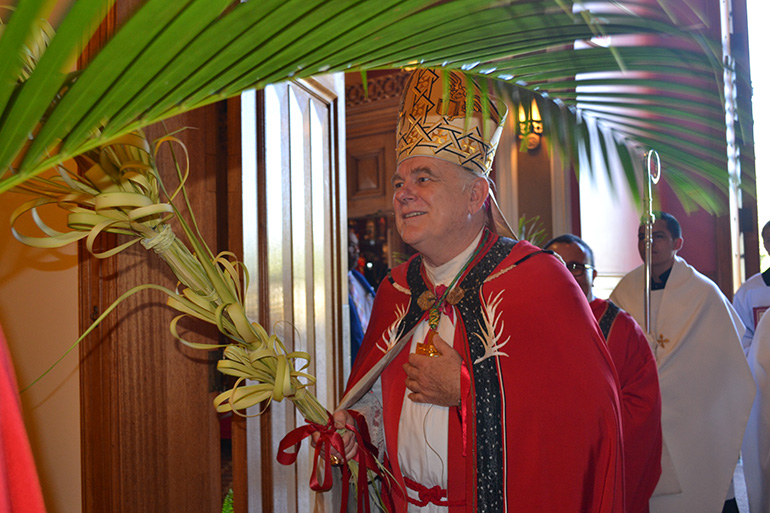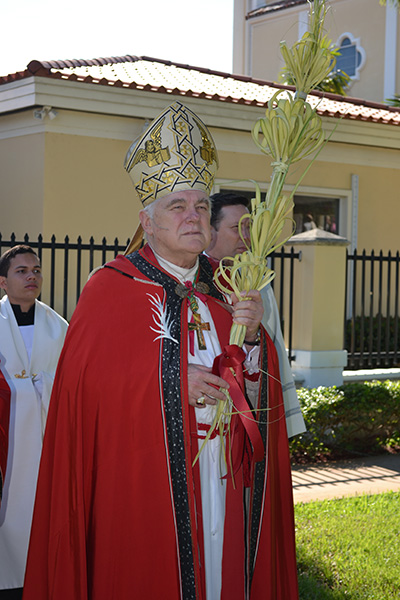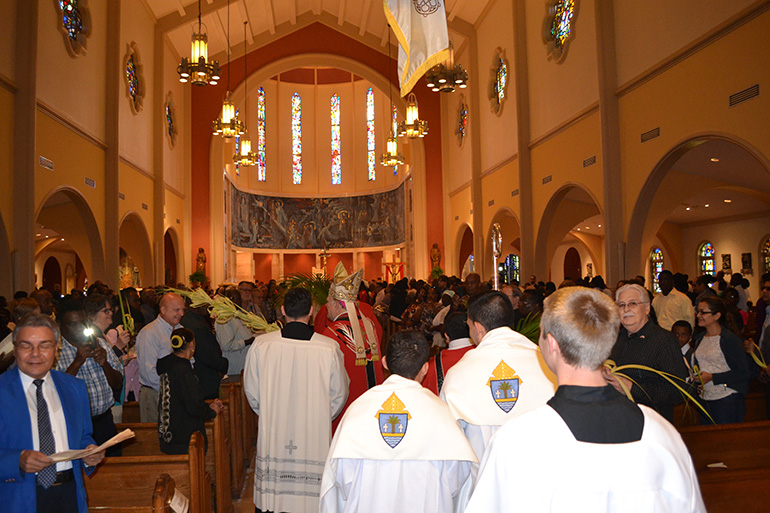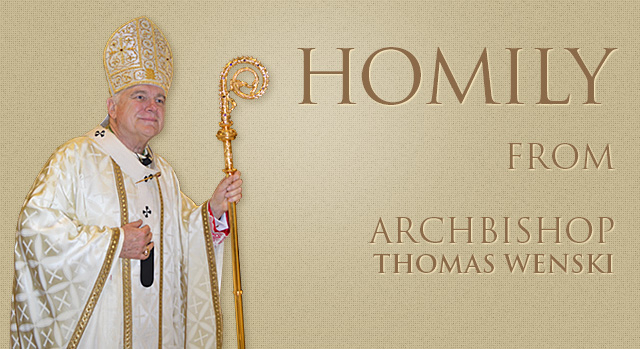By Archbishop Thomas Wenski - The Archdiocese of Miami

Photographer: MONICA LAUZURIQUE | FC
Archbishop Thomas Wenski processes into St. Mary Cathedral on Palm Sunday.
Homily by Archbishop Thomas Wenski at Mass for Palm Sunday at St. Mary Cathedral. March 29, 2015.
The readings we have heard speak for themselves – that, along with the their length, suggest that I do not need to speak too much. But allow me to make a few brief comments as we enter into this Most Holy Week of the Year.

Photographer: MONICA LAUZURIQUE | FC
Archbishop Thomas Wenski begins to process into St. Mary Cathedral on Palm Sunday.
It is Jesus’ gift of himself – offered from Calvary – that makes this week holy in spite of the unholy things done to our Lord. The realism of the Passion Narrative is striking – we could subtitle this narrative as “people behaving badly” – for in these verses almost each and every sin imaginable is committed against God in the person of Jesus Christ.
The disciples fall asleep when they should have prayed and watched (and that dozing seems to have continued throughout the history of the Church). Then, there are the betrayals – Judas for material gain; Peter for lack of courage. The disciples who were called to follow Christ run away from him – one in such a panic that he leaves his clothes behind. We see the trial in a “kangaroo court,” the maneuvering to block a release of Jesus by calling for Barabbas’ freedom. And then, both Jews and Gentile compete with each other in all manner of mockery, physical humiliation and torture and scorn for his mission.
I draw your attention to the loving waste of the expensive perfume in Bethany. The woman at Bethany is the one person who doesn't behave badly towards Jesus. She spent the equivalent of a year’s wages on the perfume and gives it all to Jesus, even breaking the flask to get out the last drop. She is not without her critics. But notice how Jesus brushes off the criticism. She’s done the right thing – anointing Jesus for his death. She “wastes” precious ointment on Jesus; and Jesus “wastes” his life as a sign of God’s love for the world.
Like the woman at Bethany, the Church also has her detractors who criticize her for “wasting” resources on elaborate and beautiful rituals and in building magnificent cathedrals and churches. Yet what this woman did should be an example for us. Generosity in things to do with sacred worship is always praiseworthy, for it is a sign of our love for the Lord who generously gives himself to us in every Eucharist.
It might seem indeed that Jesus’ mission was a failure, that his death was a waste. But that is not the end of the story. Jesus did not waste his life, nor did the woman waste her ointment, nor is the Church’s generosity wasted in offering fitting worship to God through Christ. The story ends with the victory of Resurrection. But as if in anticipation of that victory, Jesus in the moment of his seeming defeat wins the soul of the centurion – the first convert to faith. He declares: truly he was the Son of God. It is his gift of himself that makes us, in turn, God’s sons and daughters – for in dying with Christ, we also rise with him to new life.

Photographer: MONICA LAUZURIQUE | FC
Followed by seminarians serving as acolytes, Archbishop Thomas Wenski processes into St. Mary Cathedral on Palm Sunday.

